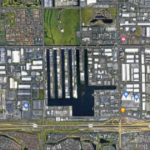For the second consecutive year, California workers’ compensation premiums levels rose in 2011, but continually growing costs of claims has eroded statewide underwriting results, according to an annual report from the Workers’ Compensation Insurance Rating Bureau of California (WCIRB).
Estimated statewide written premium grew roughly $600 million from $7.1 billion in 2010 to an estimated $7.7 billion in 2011, the report stated. Premium remains below pre-recession levels in 2007, and nearly $9 billion below the high in 2004.
The report also showed the average cost of claims experienced “modest growth” in 2011, and insurer expense ratios continued to remain high.
“As a result of the increases in claims costs and expenses, the increase in written premium was insufficient to reduce the accident-year combined loss and expense ratio for 2011,” it stated.
Increasing claim severities between 2006 and 2009, reduced premium levels, and high expense ratios have eroded statewide underwriting results. WCIRB estimated a statewide combined loss and expense ratio for accident years 2009 and 2010 of 130 percent, the highest ratio since accident year 2001.
WCIRB cited a latest report from the National Association of Insurance Commissioners showing that for the third straight year, the California workers’ compensation insurance industry’s average return on net worth of 5.2 percent was well below the Fortune – All Industry average of 12.7 percent in 2010.
Average Losses Climb
The WCIRB report follows a March report by the California Workers’ Compensation Institute. The latter report showed that for the fifth consecutive year, increases in the average loss per claim – led by escalating medical losses – pushed up total workers’ comp costs for cities, counties and other public agencies in the state.
“The workers’ comp market in California is suffering from increased costs,” said Mark Sektnan, president of the Association of California Insurance Companies. Sektnan pointed to data in the WCIRB report that shows while claim frequency continues to move downward, claims severity is rising.
There are several reasons for this upward trend, many of which Sektnan believes start with the deterioration in the objective standards for workers’ comp cases that were set in 2003 with the establishment of American Medical Association guidelines on claims.
Courts have been ignoring these standards, and a few landmark cases have set a standard for flaunting these guidelines, Sektnan said, pointing to the 2009 decisions in Ogilvie and Almaraz/Guzman.
The report stated that although there was also no major judicial action impacting workers’ compensation in 2011, “the industry continues to grapple with the ramifications of the 2009 Ogilvie and Almaraz/Guzman decisions.”
Sektnan noted that such cases are yielding a growing number of considerations for awards in workers’ comp cases. Sleep apnea, sexual dysfunction and psychological claims are becoming more commonplace in workers’ comp. “We’re starting to see psych claims being a part of almost every claim,” he said.
Multiple body part claims, in which often the parts end up adding up to more than the sum, also are rising, Sektnan added. “There are claims where people can be over 100 percent disabled,” he said.
Employers on Alert
Jerry Azevedo of Workers’ Compensation Action Network, a group that represents the interests of employers, expressed concern about signs of rising claim severity. “Employers are on high alert when it comes to the increasing costs for workers’ compensation,” he said. “We know that claims costs are up significantly and that rates have started to creep up as a result. The red flag in this report is that the rate increases haven’t been enough for insurers to break even, and there’s real problems in the form of more claims, more litigation and liens. Unless we start taking some action to reduce costs in California, larger rate increases are likely.”
Despite no change in advisory pure premium rates in 2011, many insurers filed for manual rate increases.
The WCIRB report showed average filed manual rates as of July 1, 2011 were $3.27, but insurers continued to discount their filed manual rates.
The industry average charged rate for 2011 was $2.37, “a significant discount from the industry average filed manual rate,” and nearly $4 below the industry average charged rate in the second half of 2003 before worker’s comp reforms, the report stated.
Was this article valuable?
Here are more articles you may enjoy.


 Severe Convective Storms Top Insured Natural Disaster Losses in H1: Swiss Re
Severe Convective Storms Top Insured Natural Disaster Losses in H1: Swiss Re  Divers Find 32 Cars Submerged in Lake Near Miami
Divers Find 32 Cars Submerged in Lake Near Miami  ChatGPT Fever Spreads to US Workplace, Sounding Alarm for Some
ChatGPT Fever Spreads to US Workplace, Sounding Alarm for Some  Kellogg’s ‘Woke’ Workplace Diversity Programs Are Illegal, Group Claims
Kellogg’s ‘Woke’ Workplace Diversity Programs Are Illegal, Group Claims 


